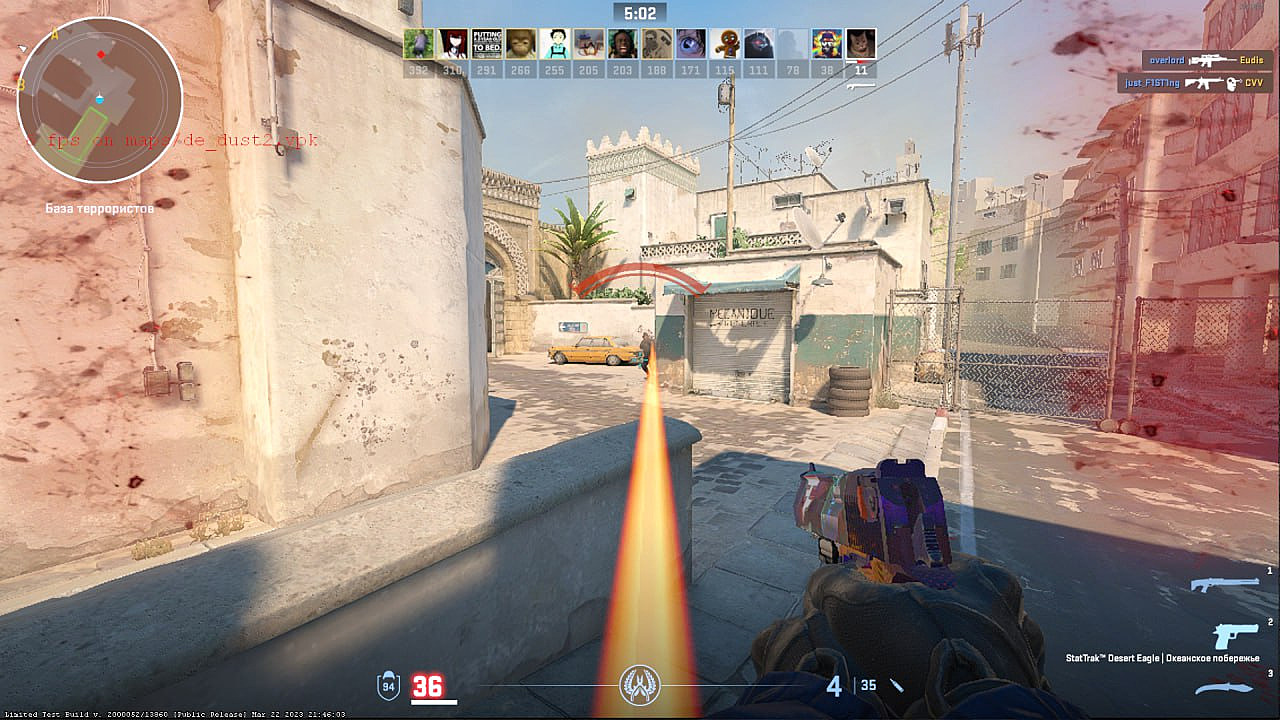The Ultimate Hookup Guide
Explore expert tips and advice on navigating the world of modern dating and hookups.
Why Your CS2 FPS is as Elusive as a Rare Skin Hunt
Unlock the secrets behind elusive CS2 FPS boosts and discover why it's as tricky as hunting rare skins! Don't miss out on these game-changing tips!
Understanding FPS Drops in CS2: Common Causes and Solutions
In the realm of competitive gaming, experiencing FPS drops in CS2 can be incredibly frustrating, especially when every millisecond counts. There are a variety of common causes for these performance issues that players must understand. Hardware limitations can play a significant role; older graphics cards or insufficient RAM can struggle to keep up with the demands of the game. Additionally, background applications consuming CPU resources can lead to significant performance dips. Another culprit could be your internet connection; fluctuations in network stability can directly impact frame rates and game responsiveness.
Fortunately, there are effective solutions to mitigate FPS drops in CS2. First and foremost, consider updating your drivers and optimizing your graphics settings. Lowering resolution and adjusting texture quality can help improve performance without sacrificing too much visual fidelity. Additionally, it's advisable to close unnecessary background applications before launching the game. Players can also enable game mode on their operating system, which prioritizes gaming performance. If connectivity issues persist, switching to a wired connection might provide a more stable and reliable gaming experience.

Counter-Strike is a team-based first-person shooter that has captivated gamers around the world. Players can enhance their gameplay experience by fine-tuning their device settings, allowing for improved performance and reaction times in competitive matches. This franchise has evolved over the years, with the latest installment continuing to attract both new and veteran players.
Optimizing Your CS2 Settings for a Smoother Gameplay Experience
When it comes to achieving a smoother gameplay experience in CS2, optimizing your settings is crucial. Start by accessing the game’s settings menu and adjusting the resolution to match your monitor's native display. A lower resolution can improve performance, but ensure you find a balance that maintains visual quality. Additionally, tweaking settings such as texture quality and shadow details can significantly impact frame rates. Aim for a configuration that prioritizes performance without compromising on essential visual elements necessary for competitive play.
Another key aspect of optimizing your CS2 settings involves configuring your controls to enhance responsiveness. Consider binding essential actions like crouching and shooting to keys that feel comfortable and intuitive. Furthermore, adjusting your mouse sensitivity is vital; lower sensitivity can provide better precision for aiming, while higher sensitivity allows for quicker movements. Lastly, don’t forget to regularly update your graphics drivers and game client to leverage any performance optimizations that developers have implemented. By taking these steps, you can ensure a fluid and enjoyable gaming experience.
Why Is Your CS2 FPS So Unstable? Exploring Hardware and Software Factors
Experiencing unstable FPS (frames per second) in Counter-Strike 2 (CS2) can be frustrating, especially when every millisecond counts in competitive gameplay. Several hardware factors contribute to this issue, including your CPU, GPU, RAM, and even your cooling system. For instance, an outdated graphics card may struggle to render high-quality graphics smoothly, leading to a drop in FPS. Additionally, a slow or failing hard drive can also impact loading times and game performance. To ensure optimal stability in your FPS, consider upgrading components or ensuring they are properly configured to handle the demands of CS2.
In addition to hardware, software factors play a crucial role in affecting your gaming performance. Outdated drivers, background applications, and even game settings can lead to instability in FPS. Make sure to regularly update your GPU drivers and close unnecessary applications before launching CS2 to free up system resources. Furthermore, tweaking your in-game graphics settings can also help you achieve a more stable FPS. Experiment with lowering certain settings like shadow quality or texture resolution to find a balance that maximizes performance without sacrificing visual quality.